Are you struggling with teaching students with echolalia?
Talking to someone who repeats back everything that you say is tough. Teaching them is tougher… so what can you do when you are teaching students with Echolalia and Autism? Read on for tips on teaching students with echolalia, and be sure to get your free printable!
Echolalia… Echolalia
Picture this… me teaching in elementary school during the early years of my career.
I came out of alternative certification and had no idea about really working with students who have profound and severe disabilities. The time learning about that population of students was super short… and really impractical, so I was winging it.
Meet Johnny (not his real name) who was a somewhat typical student with Autism who also had severe social and communication deficits. He was smart, sometimes violent… and he educated me on Autism in a very hands on way. So, this was our snack time in the beginning:
Me: “Johnny, what do you want for snack?”
Johnny: “Snack.”
Me: “Johnny, do you want an apple or cookies?”
Johnny: “Cookies.”
Me: “Johnny, do you want cookies?”
Johnny: “Cookies.”
Me: “Here Johnny, here’s your cookies.”
Johnny: Throws cookies all over the place and proceeds to flip the table.
Me: *Sigh*
Sound familiar? If you are teaching in an Autism unit I know you have been there. So what do you do? How do you even start teaching students with echolalia?
First, what is echolalia or echolalic speech?
What is Echolalia?
I always caution the teachers that I work with to presume competence above all else, and sometimes that can be tough when you feel like you’re talking to yourself. But the truth is that students who are echoing your speech are really trying to communicate, they just are not progressing as fast as some other kids.
Think back to the days when your kids were little… how did they start in their language acquisition? If you can remember, then you know exactly what echolalia is. Simply put, echolalia is when a person repeats what was just said.
Good news is your student is talking! And the process of language development includes echolalic speech. My grandson is 2 years old and repeating things that people say all the time. His delayed echolalic phrase is “whoa”. He says it for everything. It is totally a normal part of speech development. But when you are teaching students with Echolalia, you have to be more intentional on moving them past that stage.
Types of Echolalia: Immediate vs. Delayed Echolalia
Immediate Echolalia looks something like this:
Me: “Johnny, do you want to take a break? Yes or no?”
Johnny: “Yes or No.”
It is a part of the speech he was just receiving and is repeated in the moment.
Delayed Echolalia is a little different. A student is repeating back something they have heard previously. Sometimes that is a certain phrase or sound and sometimes it can be repeated lines from a some of movie. Delayed echolalia looks something like this:
Me: “Johnny, do you want to take a break? Yes or no?”
Johnny: “And now a word from our sponsors…”
What’s the difference for you? The two responses sometimes mean two different things. With Immediate echolalia, a student is aware they should be responding and they have something they want to say/share, but are unable to make that happen- not necessarily because they do not have the words, but because they cannot get them out.
They may need language modeled for them and benefit from scripting.
A student who is delayed in their echolalia may not have the words at all. Instead they are using language that was heard when they were happy or sad or eating a taco as a means to capture that desire or emotions. I think of it like Bumblebee from Transformers. He was not interested in Sexual Healing with Sam, but when he played that song it had an implied meaning.
With this type of student, there may be an inability to find and effectively use words.
So What Do I Do?
There are several strategies you can use when teaching a student with echolalia.
1. Sentence Stems.
In this model, you stop asking a student “Do you want…?” questions and stop asking Yes or No questions. Instead, you will use sentence stems to get a student to respond by prompting with “I want ____.” and wait for a response.
This requires two things: A lot of wait time (and you can read more about that here), and assurance that a student has the language needed to respond. If they are missing the vocabulary to answer, you may have to pair this sentence stem system with a visual icon. This is the basis for PECS (Picture Exchange Communication System). You can read more about this system here.
2. Scripting.
This is another great way to implement somewhat authentic conversation with students as part of good social skills instruction. Getting a student to interact, even scripted, through some basic social situation will help those students who know what they want to say but can’t and also those who know how they feel, but can’t find the word. I used to use a scripting sequence that looked like this:
Me: “Good morning Johnny.”
Johnny: “Good morning Mrs. Noodle.”
Me: “How are you today?”
Johnny: “I’m fine, thank you. How are you?”
Me: “I’m great, thanks for asking.”
Johnny: “Okay. Talk to you later.”
At least in this situation he could interact in a way that moved beyond the echo and was socially appropriate.
Want a FREEBIE to support this? Download my Talking Bubbles tool HERE. Laminate the pages or put them in sheet protectors and write what you want each person to say in your sequence. Then practice, practice, practice!
Need more? Try this Sentence Stem tool >HERE< which gives you visual scripting and is already designed… you just need to implement it (download the Preview for a Freebie). The most important thing is to model it with a student and then staying consistent.
SOCIAL STORIES FOR STUDENTS WITH AUTISM
Looking for supports as you work on social skills with kids who have Autism or Developmental Delays? Pick your targeted behavior and get started today!
3. Pair Preferred with Non-Preferred
So this one is a great starting point. When you are offering choice, be mindful of how you order your choices. Granted, this model can get you slapped, but is does work over time. It looks something like this.
Me: “Johnny, do you want chocolate or salad?”
(The student hates salad and would rather die than eat it. The chocolate is preferred.)
Johnny: “Salad?”
( I give the student the salad as requested. Insert me ducking to avoid a flying table here.)
Me: “Johnny, do you want chocolate or salad? Chocolate”
(I may model here what the response should be to get the item he wants by saying ‘chocolate’ through a few trials so he has heard the appropriate way to answer.”
Johnny: “Chocolate”
(I give Johnny the chocolate but start to fade the prompt).
Me: “Johnny, do you want chocolate or salad? I want…”
(I may steal my sentence stem method and adapt it to use it here.)
Johnny: “Chocolate”
Me: “YAY!”
Offering Choice and Voice is so important- and with this method we move away from the adult deciding for the student because they are Echolalic.
4. Teach “I don’t know.”
So this one is to teach a response that is not an echo. Here, when you ask a student a question (preferably one they legitimately don’t know), you would ask the question and then end it with “I don’t know”. Here’s what that looks like:
Me: “Johnny, what are the ingredients in chocolate? I don’t know.”
Johnny: “Don’t know.”
What this does is normalize the response so it feels more like how a non-disabled peer may respond. (I know my 16 year old says “I dunno” a lot!) You would fade the prompt over time and also pair this type of question with ones Johnny does know so he does not generalize that response over all questions.
Okay… Do You Got It? Got It!
If you take the time to model and script social interactions, use sentence stems or a PECS system paired with oral language, as well as pair preferred with non-preferred, you will start to see a change in echolalic behavior over time. Remember to be consistent, to allow extra wait time, and to practice, practice, practice!
FAQ: Teaching Students with Echolalia
Is echolalia only for people with autism?
Individuals with autism spectrum disorder often struggle with language skills and communication skills. They also typically have challenges with social interaction, social skills, and social communication. Autistic children with functional language delays may need the help of a speech therapist or speech pathologist for a multitude of reasons, including echolalia. Echolalia, however, is not only an issue associated with autism.
Why are they repeating tv shows?
When a child repeats a tv show theme song or lines from a movie, then it’s important to remember it’s delayed echolalia. The reason they are repeating it is that it is their means of communication. Echolalia means an individual has communication challenges, not that they don’t have something to say or feelings, or thoughts. In other words, they are repeating to talk and make a communicative attempt.
What can I do if my child’s teachers don’t get it?
Special education teachers are working with a lot of issues associated with student disabilities. Sometimes the most common reason a teacher struggles with different types of echolalia is that don’t know that echolalia plays an important part in the development of communication. In fact, echolalia is part of the language development of a typically developing child. As the parents of children with autism, speak with your child’s teacher about their autism and ask them to seek opportunities for professional development. Then see if your speech-language pathologist has any information they can share about the repetition of phrases and strategies from language therapy.
What resources can I use with echolalia?
There are plenty of resources you can use to work with students on academics and functional skills in about out of the classroom. When it comes to echolalia, however, it is about knowing the different reasons a child is using repetitive speech. There is a real purpose to repeating simple words or the last word. It is part of communication. Whatever resources you use to teach in the classroom that focuses on communication are great for autistic students. So use the resources you already have to work on language comprehension, finding the right answer in text, and receptive language skills. In addition, you can consider using a social story, social narratives, or activities that help a student understand body language, facial expressions, and other social skills.
What are some strategies to teach echolalia?
There are some specific strategies that can support special needs students in the classroom who use echolalic statements or precise repetition. As mentioned above, use sentence stems, scripting, by pairing preferred and non-preferred, as well as by teaching ‘I don’t know’. These strategies will help address targeting the communicative purpose of these types of repetitive behaviors.
How do you break echolalia?
Echolalia is not a. You may consider support from a language therapist or speech-language pathologists who can address specific strategies for addressing speech development and communicative function. That will include early intervention, speech therapy, visual supports and possibly learning practiced phrases.
Can children with echolalia learn to speak?
Children with echolalia can speak. They may not say the appropriate response as anticipated, but they are speaking in their own way. As you work with a child who has echolalia, it’s important not to draw attention to the echolalic utterances as being wrong. Be supportive. The child will see that as a positive sign to keep talking, even if they are having a difficult time. When autistic kids use repetitive echolalia speech patterns, they are a normal part of language development. Support the talking and let them know they are doing a good job. Then look for strategies and supports that will help further develop language. In the meantime, act as an interpreter and rephrase the utterances into standard language. This is about support.
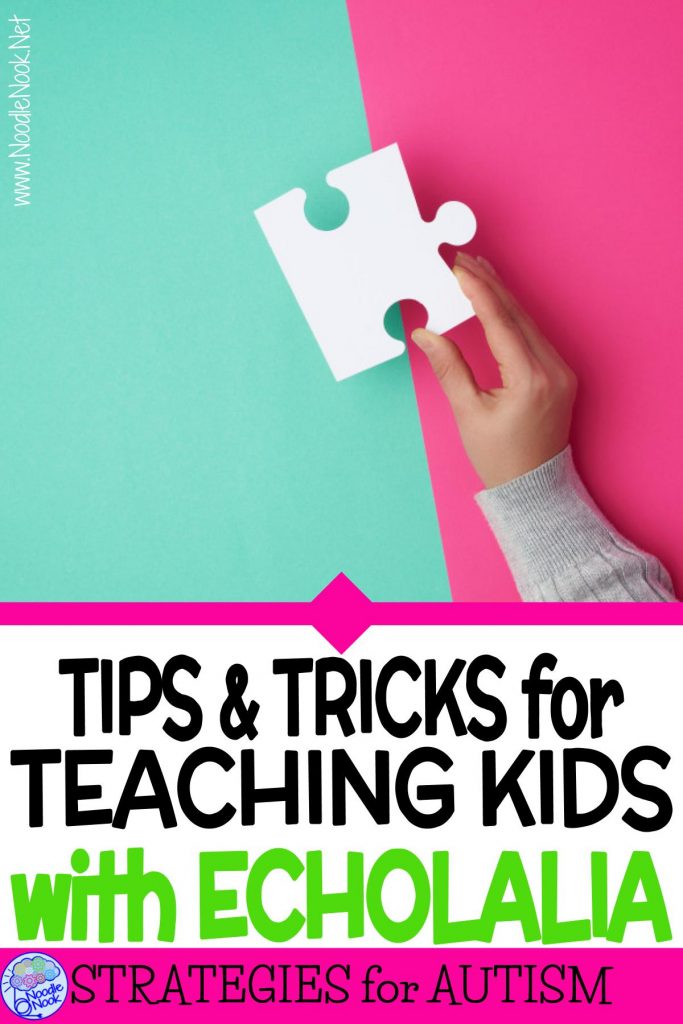
Related Posts
You may also like reading about these topics…
Why Do Kids with Autism Do That?
Replacement Behavior for Hitting
How to Teach Special Ed Online

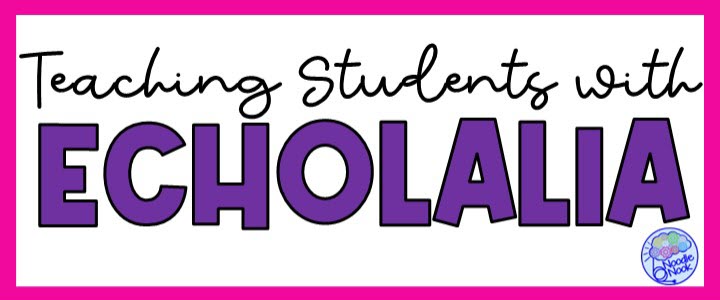
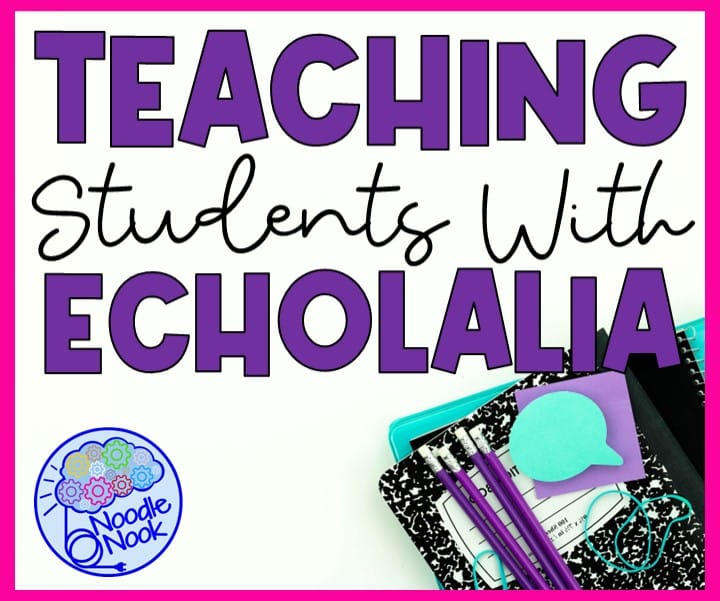
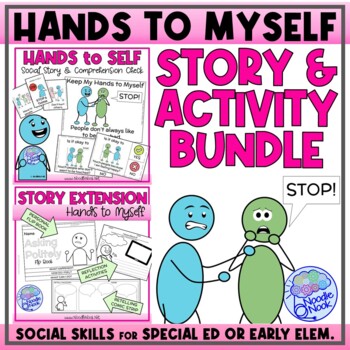
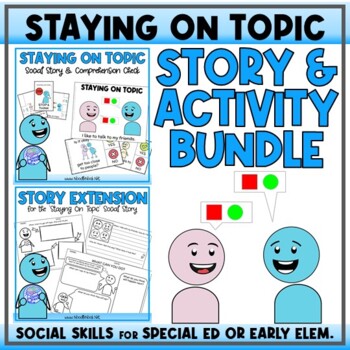
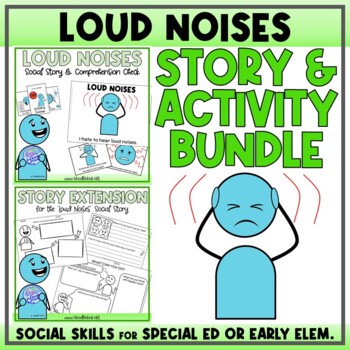

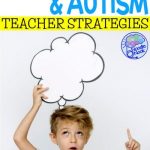
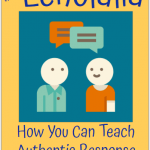
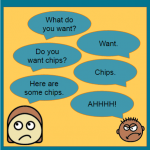
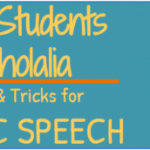
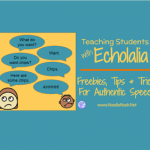

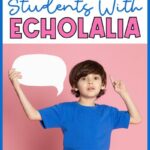

I would totally take a training on just this topic! I have so many students who echo and don’t know exactly what to do. This totally helps though- Thanks!
I had been having a real hard time with my echo students and wanted to make more progress. This totally helped! I was so glad I found this because, so far, it is really helping! Thanks a million!
I am facing this problem with my student. I am glad I came across this. It seems it can help me and try try try.
Thanks
Thanks you so much for all these helpful strategies! I can’t wait to try them
i have two echolalic students and can see this helping so much!!!! what a great blog! thanks!!!!
Wonderful blog full of helpful information. Thank you.
Correct me if I’m wrong, but I believe this goes along with fewer words and visuals for students with Autism. I work in schools as a speech therapist and have a new student on my caseload. Hes not been diagnosed with Autism yet due to a loooong waiting list for a full team eval, but he’s clearly autistic.
His goals are language based and he struggles to follow 1-step verbal directives without repetitions and sometimes physically leading him to complete. He’s VERY bright, so I was really struggling with understanding why he couldn’t follow simple one step directions. I read something about them needing visuals and very short explicit directions.
2 weeks ago, I implemented visuals and explicit directions…I was BLOWN away with the success. I can place 3 images in front of him and say 2-3 words per step and level of accuracy typically 100%!!! I stopped using “ok Michael I want you to stand up and stomp the floor then clap your hands” and went to “stomp floor, clap hands”.
I wanted to share in case anyone else is feeling frustrated, Google “teaching kids with autism go follow directions with visuals”. Tons of materials out there already made. You can try some generic ones to see how your student does before customizing them to their individual schedules.
Remember “I wouldn’t change them for the world, but I would change the world for them!”
I totally agree with you Amanda!
Lessening the cognitive load and using fewer words can be so helpful!
I am glad to hear you had success using less language and I am so glad you posted it here- I hope others find it and are more willing to try the strategy too.
Thanks for sharing!
I actually have “responding appropriately to questions to which he/she does not know the answer, by saying ‘I don’t know,’ etc.” as one of my objectives for several of my students! I’m so glad other people are targeting authentic communication this way with success! I think it’s especially important because these students are so often to expected to just guess when they don’t know which often leads to prompt dependency and reinforces echolalic tendencies. Thank you for posting this!
Pingback: Echolalia & Autism: A Stepping Stone to Meaningful Speech. - Speechrighter, Inc.
Hello! Kids that communicate with delayed echolalia are gestalt language processors. They are unable to generate the response you want because they cannot figure out how to break down the chunks of language they have heard. You are correct in saying they often respond by matching statements to emotions/situations they experienced in the past. However, the techniques you have listed will not help them break down their chunks and move them to self generated speech. I encourage you to read Barry Prizant’s echolalia research and Marge Blanc’s book Natural Language Aquisition.
Thanks for that information. I have the links below to the books you suggested in case followers want to read them as well.
In the meantime, what suggestions do you have to facilitate breaking down the language chunks and better self-generate speech?
Here is Natural Language Acquisition: https://amzn.to/2pDATqs and the book from Barry Prizant: https://amzn.to/2Ga3MAV
Again, I appreciate your suggestions!
My friend sent me this link to your sight today and ot was an eye-opener. I am not an educator, but I am a frustrated mom. My son is not yet diagnosed due to the two uear waiting list in our area for evaluation. I am going to try some of the suggestions here as well as the other resources listed to try and learn better communication with my son. Thank you so much for setting this sight up in simple language. Some of the books and brochures I have read were on the confusing side.
Jessica,
I am so glad to hear that this information helped you. I hope you will share it on social media (Pin it, Post it, Tweet it)… Sometimes I will talk about Echolalia with educators and they have no idea what I’m talking about much less strategies to support students. If this post can help teachers, parents, or children, then it was worth writing.
As a simple way to work on communication, I have to point you towards a Core Board to start some simple communication interactions. Check out the post ‘Where to Start with Core Vocab’ here: https://www.noodlenook.net/start-core-vocabulary/
Whatever you do in the interim until you are able to be screened, please go out of your way to address communication needs. Two years lost in language development can be huge down the road, so work on those skills now. Good Luck and please keep me updated. I’ll be thinking about you.
Hi. I’m trying to find someone to work with my 4 year old grandson.
He had echolalia and delayed speech therapy.
If you know anyone please let me know.
Thank you
Hey Fay!
I am sorry to hear you are struggling to find someone to support your grandson’s speech development. I do not know of anyone in the UK, but I am approving this comment in hopes that someone will see it and reach out. I have also shared this out on Facebook to see if we can’t find you some support. (That link is here.)
Good luck with your search,
-Ayo at Noodle Nook
What type of services should I be seeking out for my 4 year old who has delayed speech and echolalia? He currently goes to speech therapy two times a week for about 30 minutes a session. His developmental assessment with his neurologist is scheduled for 3 months out.
Hey Keisha!
I know this can be super nerve wracking! There are a couple key things to remember:
1. Your child may have delays in speaking or answering, but that does not mean there are cognitive delays. Keep interacting and presenting information and conversations like they are a neurotypical 4 year old.
2. With guidance from your speech therapist, try to introduce a PECS system or a core board system to be a companion to speech development. This is not to say your child won’t talk, just that adding visuals and speech together may help things along. Again, your SLP should have some advice on this.
3. If you can increase time spent on speech tasks, that would likely help too. The therapy is minimal, but you can target these same skills in short 5-10 minute activities or lessons daily… it will accelerate the process. Check with your SLP about what they are using or suggest based on their assessment.
4. Don’t give up. You are your child’s biggest advocate. You know them and what they need, what their support levels are at home, and what their future can be. Stay strong.
Hope this helps!
-Ayo at Noodle Nook
Comments are closed.